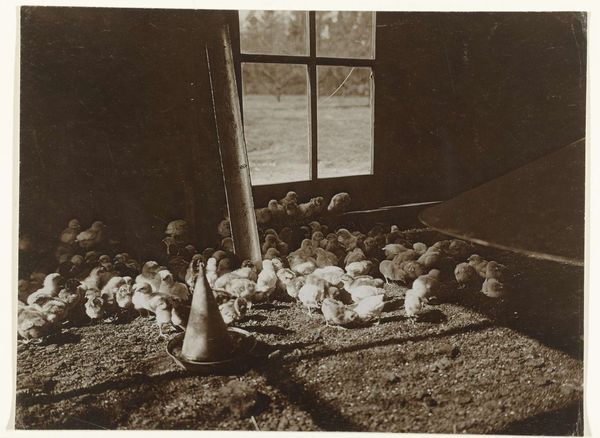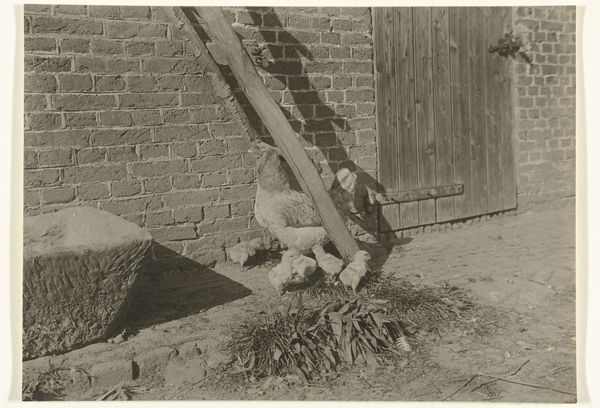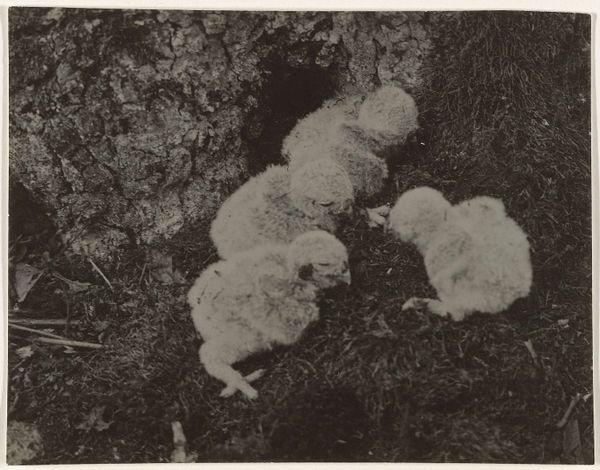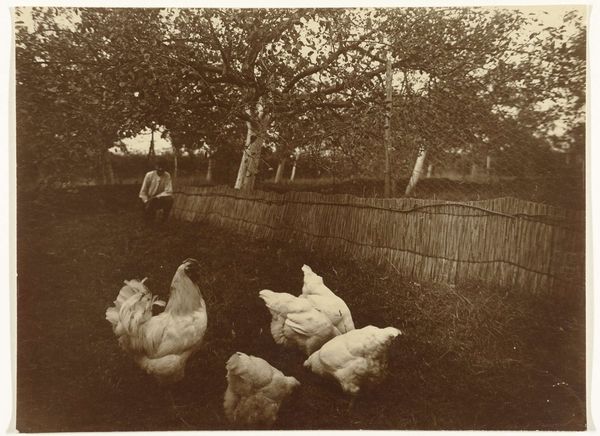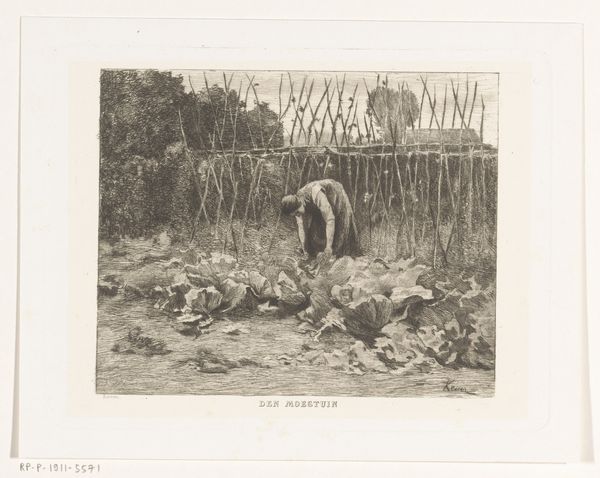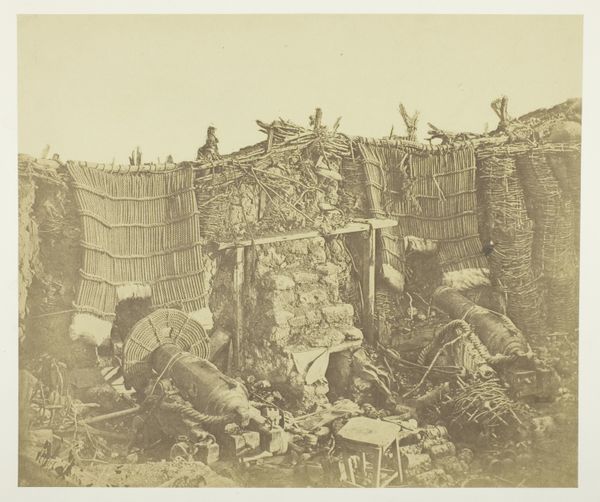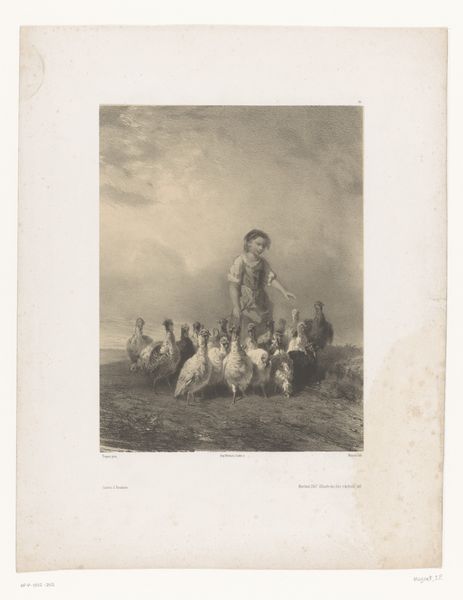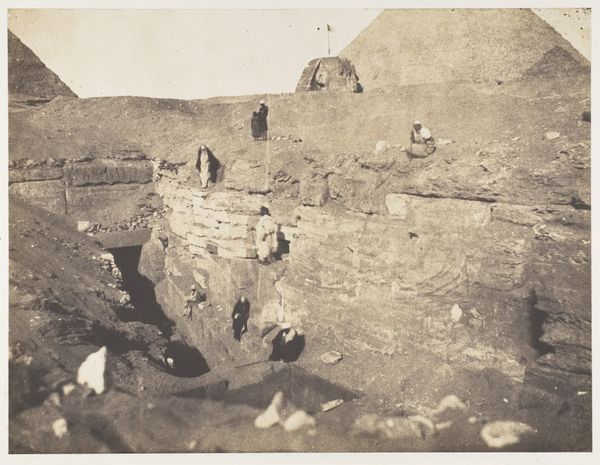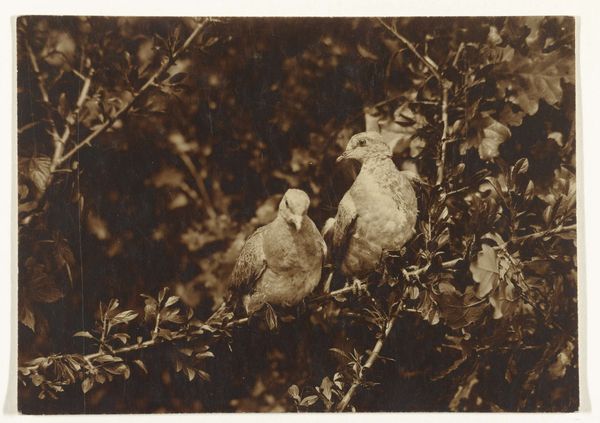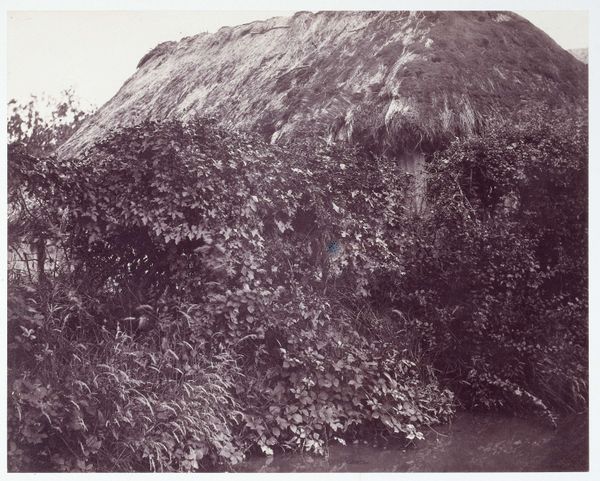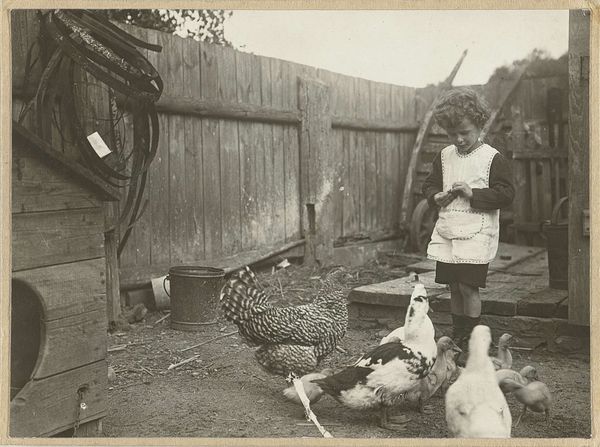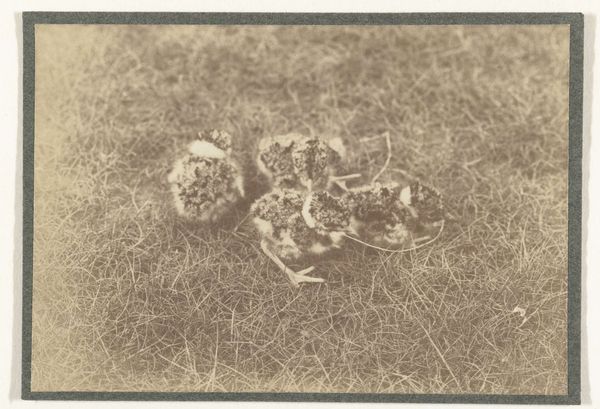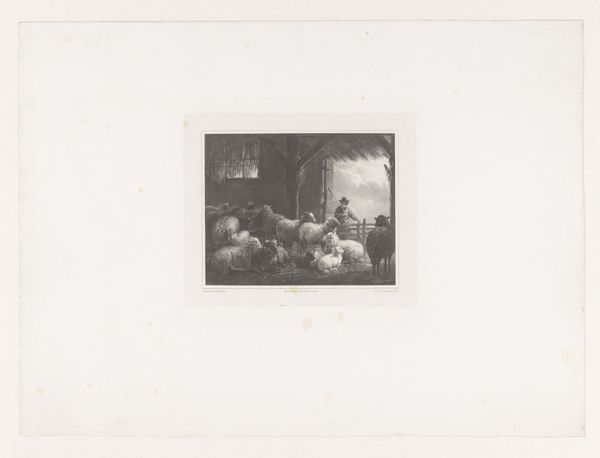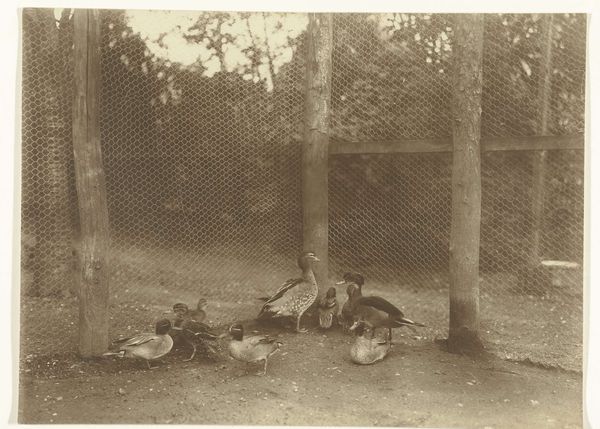
photography, gelatin-silver-print
#
print photography
#
still-life-photography
#
film photography
#
animal
#
photography
#
gelatin-silver-print
#
realism
Dimensions: height 155 mm, width 218 mm
Copyright: Rijks Museum: Open Domain
Curator: Welcome. We are standing before Richard Tepe's gelatin-silver print, "Hen with Chicks," dating from around 1900 to 1940. It's part of the Rijksmuseum collection. Editor: My initial impression is one of utter simplicity. A quiet, domestic scene rendered in almost monochrome shades, a bit washed out. It makes me think about rural life. Curator: Precisely. Tepe was a master of depicting everyday life, often elevating the mundane to something worthy of artistic consideration. These types of genre scenes became popular as the burgeoning middle class developed a fascination with both farm work and farm animals. The art became commercialized over time. Editor: It's also quite tactile, wouldn't you say? Look at the feathery texture of the hen and the downy fluff of the chicks, even the rough brick wall backdrop. You can practically feel the textures thanks to the gelatin silver print. I am interested in understanding this labor and medium as an everyday practice. Curator: I agree. Tepe’s skill lay in his ability to capture detail within the limited tonal range. There is that element of sentimentalism when people see the family unit of hen and her chicks huddled together for warmth. I also note that, unlike much portraiture of the time that idealised its subjects, Tepe adopted realism with simple details, such as dirt in the lower margin. Editor: Good observation. He truly embraced realism using photography, didn't he? I am stuck on how this domestic, almost quaint image has made its way into this important collection. Was it widely circulated as postcards perhaps? A sort of early 20th-century meme, maybe? Curator: It's quite likely that the image's accessibility played a key role. Photographs like these became popular within middle-class homes, reinforcing certain values and a longing for an imagined, simpler past. Plus, the Rijksmuseum actively collects examples of Dutch cultural heritage, which absolutely includes everyday objects like these photographs and printed commercial works of art. Editor: The photograph's quiet, almost accidental quality really pulls me in to inspect how Tepe made the image. To me, it almost anticipates the snapshot aesthetic that became more popular later on. Overall, it brings a soft lens to what society considered valuable. Curator: And in doing so, it becomes a valuable cultural record in itself. A window into a bygone era, framed through a lens of emerging modernity.
Comments
No comments
Be the first to comment and join the conversation on the ultimate creative platform.
